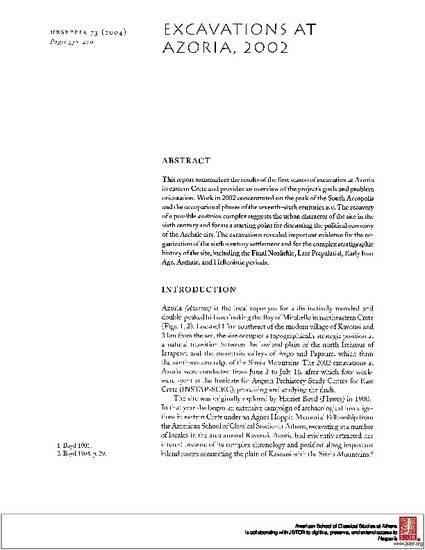
Article
Excavations at Azoria, 2002
Hesperia
Document Type
Article
Publication Version
Published Version
Publication Date
1-1-2004
Abstract
This report summarizes the results of the first season of excavation at Azoria in eastern Crete and provides an overview of the project's goals and problem orientation. Work in 2002 concentrated on the peak of the South Acropolis and the occupational phases of the seventh-sixth centuries B.C. The recovery of a possible andreion complex suggests the urban character of the site in the sixth century and forms a starting point for discussing the political economy of the Archaic city. The excavations revealed important evidence for the organization of the sixth-century settlement and for the complex stratigraphic history of the site, including the Final Neolithic, Late Prepalatial, Early Iron Age, Archaic, and Hellenistic periods.
Rights
This article is protected under the Creative Commons BY-NC license that allows for downloading and sharing articles, as long as the ASCSA and Hesperia are credited as the source. The articles and works derived from them cannot be used for commercial purposes.
Copyright Owner
The American School of Classical Studies at Athens
Copyright Date
2004
Language
en
File Format
application/pdf
Citation Information
Donald C. Haggis, Margaret S. Mook, C. Margaret Scarry, Lynn M. Snyder, et al.. "Excavations at Azoria, 2002" Hesperia Vol. 73 Iss. 3 (2004) p. 339 - 400 Available at: http://works.bepress.com/margaret_mook/6/

This article is from Hesperia 73 (2004): 339–400.